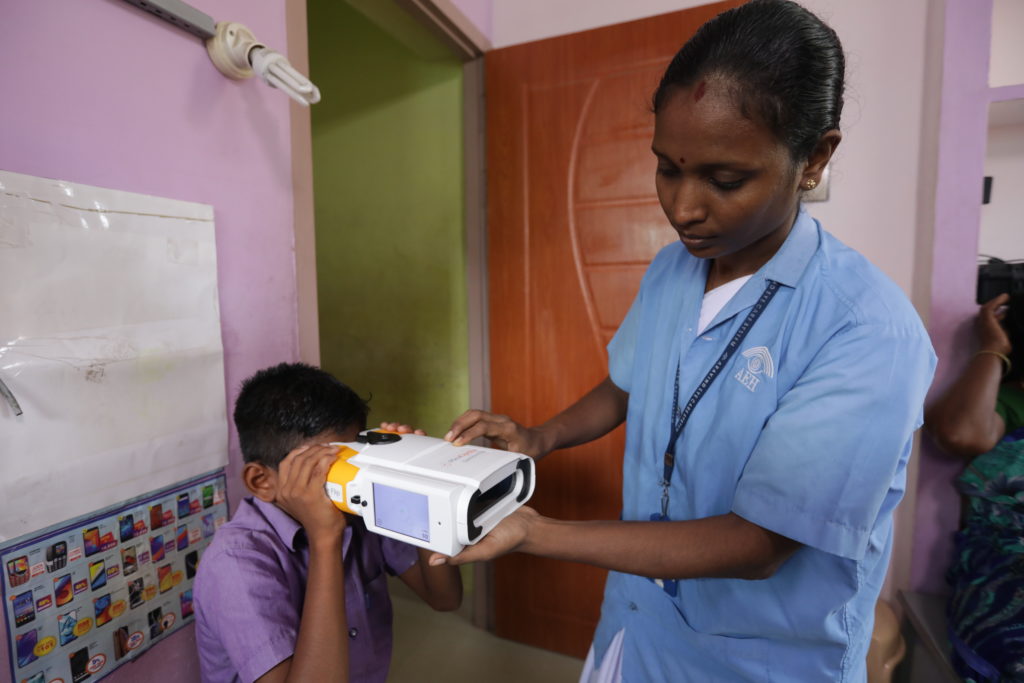ABSTRACT
Purpose
To assess the performance of an open-view binocular handheld aberrometer (QuickSee) for diagnosing refractive errors in children.
Methods
123 school-age children (9.9 ± 3.3 years) with moderate refractive error underwent autorefraction (AR) with a standard desktop device and subjective refraction (SR), with or without cycloplegia to determine their eyeglass prescription. Measurements with QuickSee (QS) were taken in 62 of these patients without cycloplegia (NC), and in 61 under cycloplegia (C). Differences in refraction values (AR vs SR vs QS) as well as the visual acuity (VA) achieved by the patients with each method (QS vs SR) were used to evaluate the performance of the device in measuring refractive error.
Results
The spherical equivalent refraction obtained by QS agreed within 0.5 D of the SR in 71% (NC) and 70% (C) of the cases. Agreement between the desktop autorefractor and SR for the same threshold was of 61% (NC) and 77% (C). VA resulting from QS refractions was equal to or better than that achieved by SR procedure in 77% (NC) and 74% (C) of the patients. Average improvement in VA with the QS refractions was of 8.6 and 13.4 optotypes for the NC and C groups respectively, while the SR procedure provided average improvements of 8.9 (NC) and 14.8 (C) optotypes.
Conclusions
The high level of agreement between QuickSee and subjective refraction together with the VA improvement achieved in both study groups using QuickSee refractions suggest that the device is a useful autorefraction tool for school-age children.
